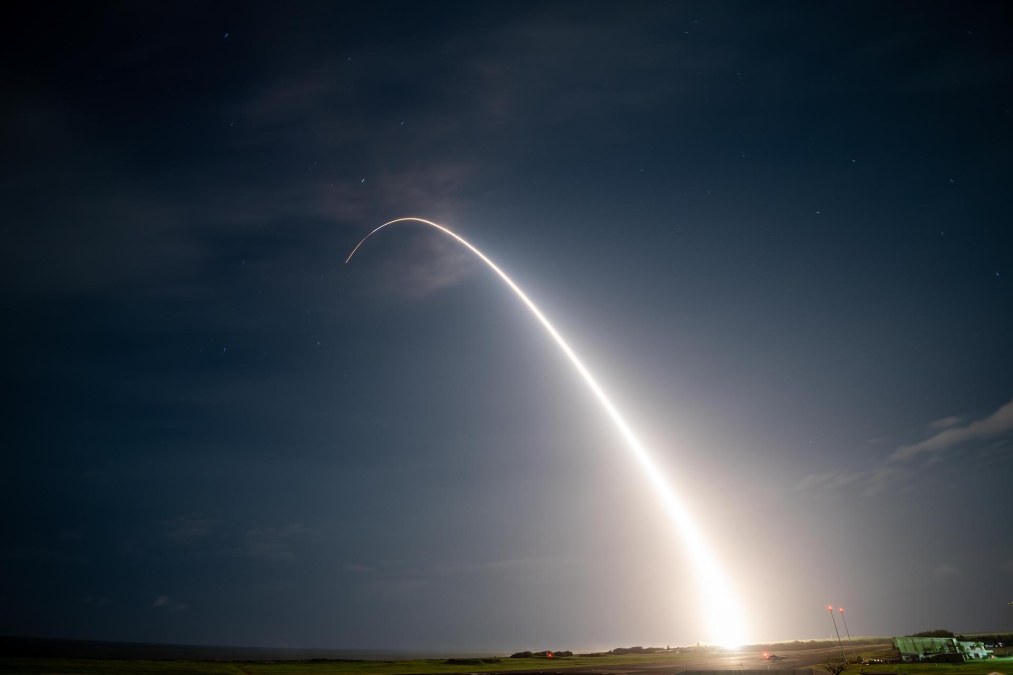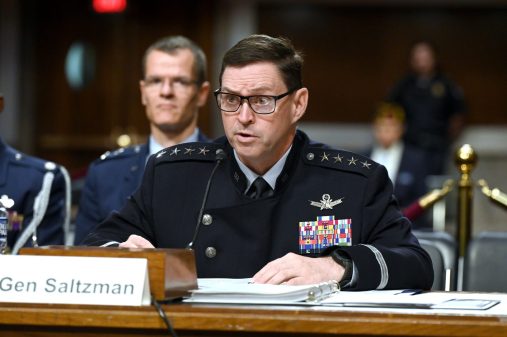Space Force stands up planning team to assess tech for Trump’s ‘Iron Dome for America’

The Space Force has established a cross-functional “technical integrated planning team” dedicated to evaluating space-based capabilities that can contribute to President Donald Trump’s vision for a next-generation homeland missile defense system, according to a senior Space Force official.
Under the “Iron Dome for America” executive order published in January, Trump has tasked Secretary of Defense Pete Hegseth to create a plan to field a multi-layered missile defense architecture for the U.S. homeland. Given how heavily the directive leans on space-based systems, Chief of Space Operations Gen. Chance Saltzman said the Space Force will likely have a “central role” in the architecture’s development.
“We are leaning forward establishing this technical IPT to start thinking about it from an overarching perspective,” Saltzman told reporters Monday.
With only a few weeks to develop a strategy and deliver it to the president, the Space Force’s new technical integrated planning team (IPT) is currently analyzing technological maturity, cost estimates and capability gaps of space systems that could be part of the architecture.
“What they’re going to do is pull it together and make sure everybody has got eyes wide open before they start saying, ‘Initiate a program here,’” a senior Space Force official said Monday during a background briefing with reporters. “It’s more of a data collection [of] what do we know, and identify what we know we don’t know.”
The directive calls attention to several ongoing space-based missile defense programs — such as sensors onboard the Missile Defense Agency’s Hypersonic and Ballistic Tracking Space Sensor Layer (HBTSS) satellites and the Space Development Agency’s Proliferated Warfighter Space Architecture (PWSA) tracking layer. Both the MDA and SDA have released respective requests for information that ask for industry feedback on possible space-based capabilities for the Iron Dome for America architecture.
The Space Force official noted that the specificity of the Iron Dome for America directive has been helpful for the IPT as they conduct their analysis.
“What that allows us to do is say, ‘Hey, which of the programs that we already have either in place or in development directly support these requirements?’ And these become high priority, obviously, because they came out in an executive order,” the official said. “Then you do a quick gap analysis — what don’t we have [in] capability or what is so far left in terms of tech readiness?”
At the same time, Trump’s EO calls for deployment of “proliferated space-based interceptors,” a new capability that would be able to defeat enemy ballistic missiles during their boost stage of flight. The Space Force official admitted that they weren’t confident of how far along the Space Force or other organizations are in development of the technology, but added it would likely require more time to develop and field.
“One of the worst things to do is bite off a technical challenge that you can’t solve in a reasonable cost frame [and] a reasonable timeframe,” the official said. “And so we’ll be very forthright with … where we think the technology stands at this juncture. I think we’ve got some research that would give us some indications.”
The Space Force official noted that several organizations — such as the Air Force Research Lab, the Defense Advanced Research Projects Agency, the Strategic Capabilities Office and others — are conducting research on future capabilities and their technical feasibility.
“That’s why we call it a technical IPT, because it is a search for what technologies are out there,” they said. “What’s required, and where are we in the levels of their readiness? Can we pull it together in a reasonable time frame? That is exactly what’s going on.”






